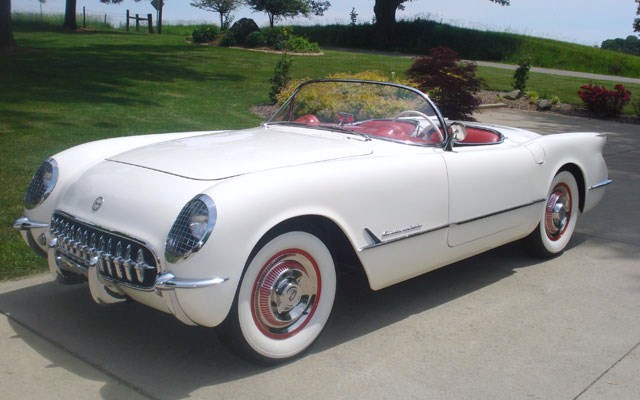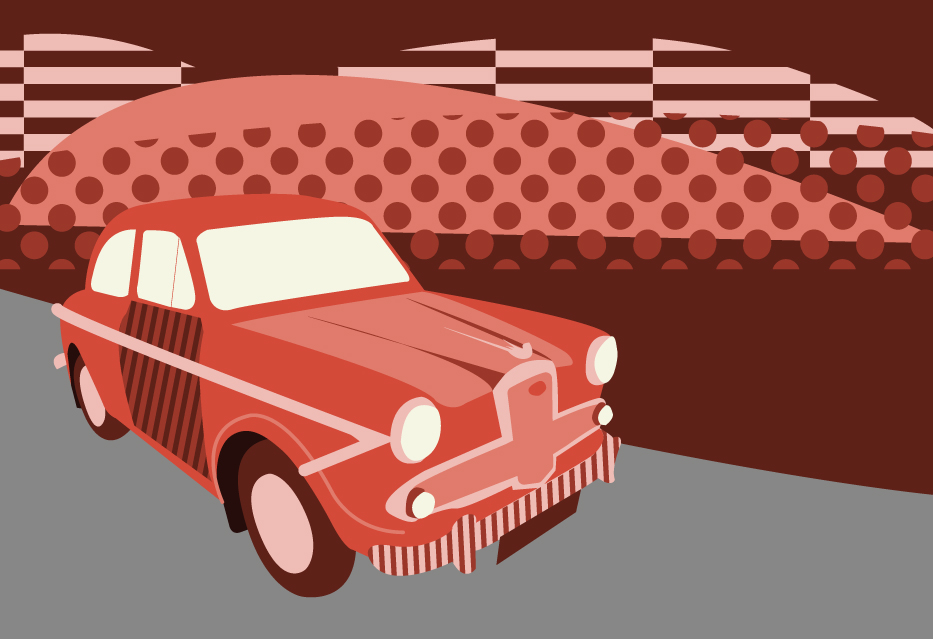If you wanted a true two-seater sports car in early 1950s America, you had little option but to plump for a Porsche, a Jaguar or a Ferrari. In other words, foreign imports – anathema to many proud Americans.
So when General Motors design chief Harley Earl decided there really needed to be a world-class US-built sports car, work on “Project Opel” began at a feverish pace.
The result was “the first of the dream cars to come true”, as the Chevrolet Corvette was billed.
We take a look at the iconic first of the breed, the C1.
When the Corvette was launched in January 1953 at the Motorama show at New York’s Waldorf Astoria Hotel, the American public had never seen anything quite like it.
Concept cars are rarely mass-produced in anything like their show form, but such was the positive reaction to the Corvette that 300 cars were hurriedly built, mostly by hand, in that first year, 200 of which survive today.
January 17 was the day a legend was born – a sleek roadster with a toothy grill, rocket-ship rear lights, and smooth, uncluttered lines that produced a transatlantic look to give the Americans their own sports car to be proud of at last.
Not only that, but the Corvette was the first mass-produced US car at the time to be built using fibreglass, making it light, modern, rust-proof and, most importantly at the time, quick to get into production.
Behind the beautiful curved windscreen was a jukebox-style interior of leather, painted bodywork, stunning chromed knobs and dials, and one of the funkiest steering wheels you’ll ever see.
Under the bonnet, sorry, hood, was an in-line six-cylinder engine of 235 cubic-inch capacity (that’s just under 3.9 litres) producing 150bhp, enough to propel the car to a top speed of 108mph and 0-60 in 11.2 seconds – certainly not as rapid as the contemporary Jaguar XK120 and its other European rivals, but still not too shabby.
The optional extras on those early cars were hardly generous either: just a heater and an AM radio, and there were no wind up windows or exterior door handles. But this was meant to be an affordable dream car, after all, and the stunning looks and high-quality interior ensured the Corvette was an instant sensation.
The wide, low-slung roadster was originally built on a makeshift production line in Flint, Michigan, while a factory was prepared for full-scale production in 1954. All the cars were white with a red interior and a black hood and went on sale for $3,490 (just over $30,000 today).
Like our illustration of the Chevrolet Corvette at the beginning of the article?
Download a free high-quality poster version here.
The first full year of production saw 3,640 cars built, with economies of scale reducing the price to $2,774, but the Corvette’s lacklustre performance compared to the Europeans saw sales decline to the point where just 700 cars were made the following year.
Behind the scenes, a Russian emigre engineer called Zora Arkus-Duntov was working on giving the Corvette the grunt it needed to compete with the Europeans – and but for the introduction of GM’s first V8 engine since 1919 and competition from the new two-seater Ford Thunderbird, the Corvette story may have ended almost before it had begun.
GM bosses, who had been considering ditching the car as sales failed to meet expectations, refused to countenance handing the market to their great rivals, and set about revamping the car for 1956.
History tells us that it worked like a dream. The second generation Corvette C1 is the iconic 50s American sports car – sharper, meaner and faster than its predecessor, with twin headlights added in 1958.
The toothy chrome grille was still there, but a little larger this time, the space-rocket rear lights were removed in favour of a tapered, cleaner look, while the scalloped side sections with contrasting paintwork gave the car a more purposeful, thrusting aura.
Sports Car Illustrated said in May 1956, that “without qualification, General Motors is now building a sports car”, and that “the Corvette as it stands is fully as much a dual-purpose machine as the stock Jaguar, Triumph, or Austin-Healey”.
In other words, the Corvette had arrived as a genuine rival to these sporting thoroughbreds on road and track.
As well as an increase in power to between 210bhp and 240bhp, the Corvette now came with wind up windows, a better hood (electric optional on both), and a 3-speed manual gearbox.
As Arkas-Duntov – nicknamed the “Father of the Corvette” – was keen to make the ‘Vette a competitive racer, further power upgrades came in 1957, with capacity increased to 283 cubic inches (4.6-litre), married to optional fuel injection and a four-speed gearbox producing 290bhp – a far cry from the 150bhp of the original.
Adrian Flux Classic Car Insurance
Now, the Corvette was finally starting to sell in greater numbers – 6,339 in 1957 rising to 9,168 following the introduction of the quad headlight model in 1958.
Sports Car Illustrated said of this car: “For all round performance per dollar, the Corvette is hard to beat.”
As improvements in power, handling and refinement were made over the years, production rose every year from 1956 through to 1962, peaking at 14,531 in the final year of the C1 before the C2 Stingray took over.
Four tail-lights joined the four headlights in 1961, with numerous other minor tweaks to the exterior and interior detail, while 1962 saw the fastest and most powerful Corvette yet – a 360bhp, fuel-injected V8 bored out to 327 cu in (a whopping 5,400cc).
By the time the Stingray took over in 1963, 69,015 Corvettes had been sold, and the car that started as a slightly under-powered boulevard cruiser had become a genuine sports and race car that would still be in production more than six decades later.
If you’re thinking of buying a C1 Corvette though, you’ll need between £50,000 and £90,000 in your wallet to get hold of a good example.
Time to start saving…
Insurance from Adrian Flux
Get competitive classic and American car insurance for Chevrolet Corvettes of all ages with Adrian Flux.
Features can include:
- Agreed value
- Limited mileage discounts
- Owners club discount
- Laid up cover
- Wedding hire cover










